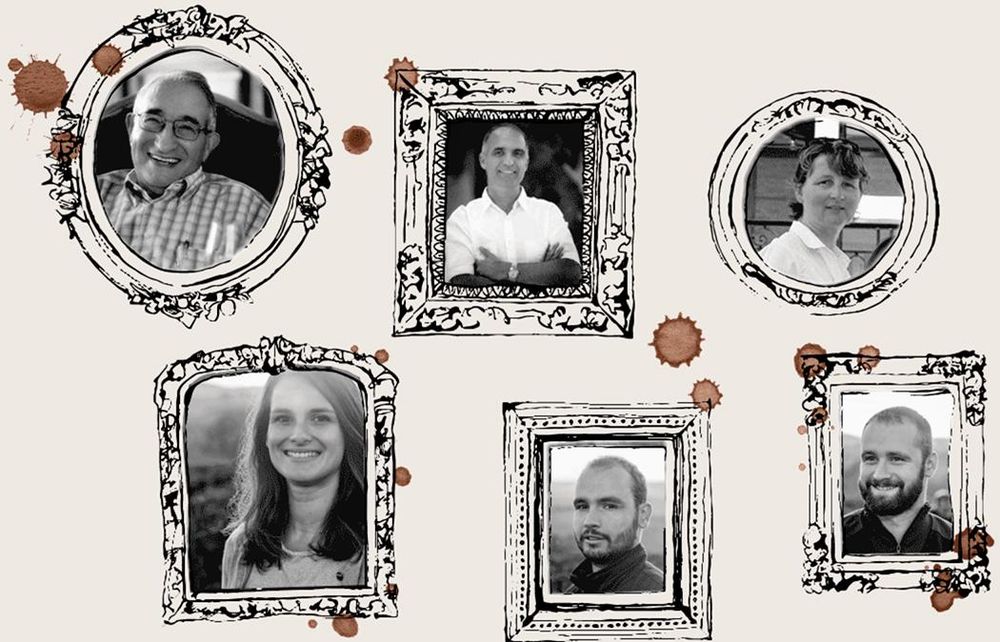“Sulfites are no problem in small quantities, but they dry out your palate and act as an anaesthetic to your taste buds,” says Michel Drappier.
Like so many Houses, Champagne Drappier saw a fall in exports on the back of the pandemic from 70% to around 50% of their typical annual production of 1.7 million bottles, although the French market did take up the slack. The United Kingdom’s imports of the company’s impressive range fell to just over 5% of its total exports, but Charline Drappier, the brand’s sales manager, is hopeful British demand will increase again. An impressive recent tasting of five of their 13 cuvées underlined what a quality producer Drappier is.

General Charles de Gaulle drank so much of Drappier wine that the house named a cuvée after him. A celebrated photograph of the former French leader shows him consuming Drappier in a motorcade on an airfield. This sense of history is very much part of the house’s DNA, with Charline, 32, and her two brothers Hugo, 30, and Antoine, 25, being eighth generation members of a family that started producing Champagne in 1808.
Antoine is involved with the viticultural side of the business, while Hugo shares the winemaking role with their father Michel, who retains overall control. His elderly father, André, 95, joins the whole family for lunch every day, having his first glass of Drappier’s Carte d’Or label at 11am. Those aiming for a similarly long innings might like to know he is thought to have drunk more than 8,000 bottles of Champagne over his lifetime.
Located at the southern end of Champagne in the village of Urville in the Côte des Bar, Drappier’s vineyards have a real sense of place, with 70% being planted to Pinot Noir. Closer to Chablis than Reims or Epernay, the soils are exclusively Kimmeridgian limestone. “The soil is poor, but it gives great wines,” Michael Drappier declared.

Half of the family’s own 60 hectares under vine are certified organic, with Antoine using his two horses, Aster and Idaho, to plough the organically-farmed plots. The Drappiers cultivate another 55 hectares of vines they do not own, of which 3.5 hectares are given over to less popular permitted Champagne varieties: Petit Meslier, Arbanne, Pinot Gris (aka Fromanteau) and Pinot Blanc (aka Blanc Vrai).
Pinot Noir, though, is Drappier’s calling card. Apart from their Blanc de Blancs (95% Chardonnay and 5% Pinot Blanc), it is the majority varietal in all the cuvées. In its Brut Nature, Pinot is 100%; in its Carte d’Or it is 80%; in its Grande Sendrée 55%. Pinot Meunier also features in one label, making up 5% of the Carte d’Or.
Two other key features of Drappier’s wines are their conservative dosage levels (4-7g/l and zero in the ‘Brut Nature’ labels) and their lower than average sulphur dioxide additions. “Sulfites are no problem in small quantities, but they dry out your palate and act as an anaesthetic to your taste buds,” Michel declared. Some Drappier labels exported to New Zealand and the Pacific Islands have no added sulfites at all.
So onto tasting the Drappier wines

Champagne Drappier Carte d’Or NV
80% Pinot Noir, 15% Chardonnay, 5% Pinot Meunier. Reserve wines make up 40% (the base being from 2018). White peach, citrus and yellow plum notes with a touch of quince jelly. Some spicy complexity. Dosage 6.5 g/l.
Champagne Drappier Clarevallis Extra Brut NV
75% Pinot Noir, 10% Pinot Meunier, 10% Chardonnay and 5% Pinot Blanc. Low dosage (4g/l) and very low sulphur dioxide – at 20mg/l around a quarter of typical levels in Champagne. Fruit all farmed organically (90% from 2017 with the rest reserve wines). Unusual label designed by Charline with wine made by brother Hugo, representing a new generation approach. A different expression of Pinot Noir – bright and vibrant with lots of energy. Very aromatic, with honeyed nose. Three years on the lees, with toast and pear notes. Complex and rich with fabulous minerality and length.

Champagne Drappier Grande Sendrée 2010
55% Pinot Noir, 45% Chardonnay. Organically farmed fruit from a single parcel, whose name derives from a wood burnt down in 1836 fires that ravaged Urville. Eight years on the lees, with 30% wine seeing oak-ageing in 15-year old 5,000l foudres. The third of a hat-trick of very fine vintages, this is an opulent wine but with a lean structure and vibrant acidity. Quince jelly, raspberry jam and brioche notes with both delicate minerality and rich salinity. Seriously complex and long. Dosage 5.5g/l.

Champagne Drappier Rosé de Saignée Brut NV
100% Pinot Noir. Skin contact with two days of maceration. Only first press; 5% of the wines are aged in foudre. 30 months on the lees and very little SO2 added. Bright pink, this has lovely freshness with very attractive raspberry and red cherry notes. Lightly spiced with real purity of fruit. Dosage 6g/l.

Charline Drappier, London tasting, November 2021
Champagne Drappier Réserve de l’Oenotheque 2002
80% Pinot Noir, 15% Chardonnay, 5% Pinot Meunier. 17 years on the lees; disgorged 2019. Lots of brioche; rich, complex and very long. Brought from Charline’s private cellar. A delightful end to a memorable tasting.
Champagne Drappier wines are imported and sold in the UK by Berkmann Wine Cellars.
































